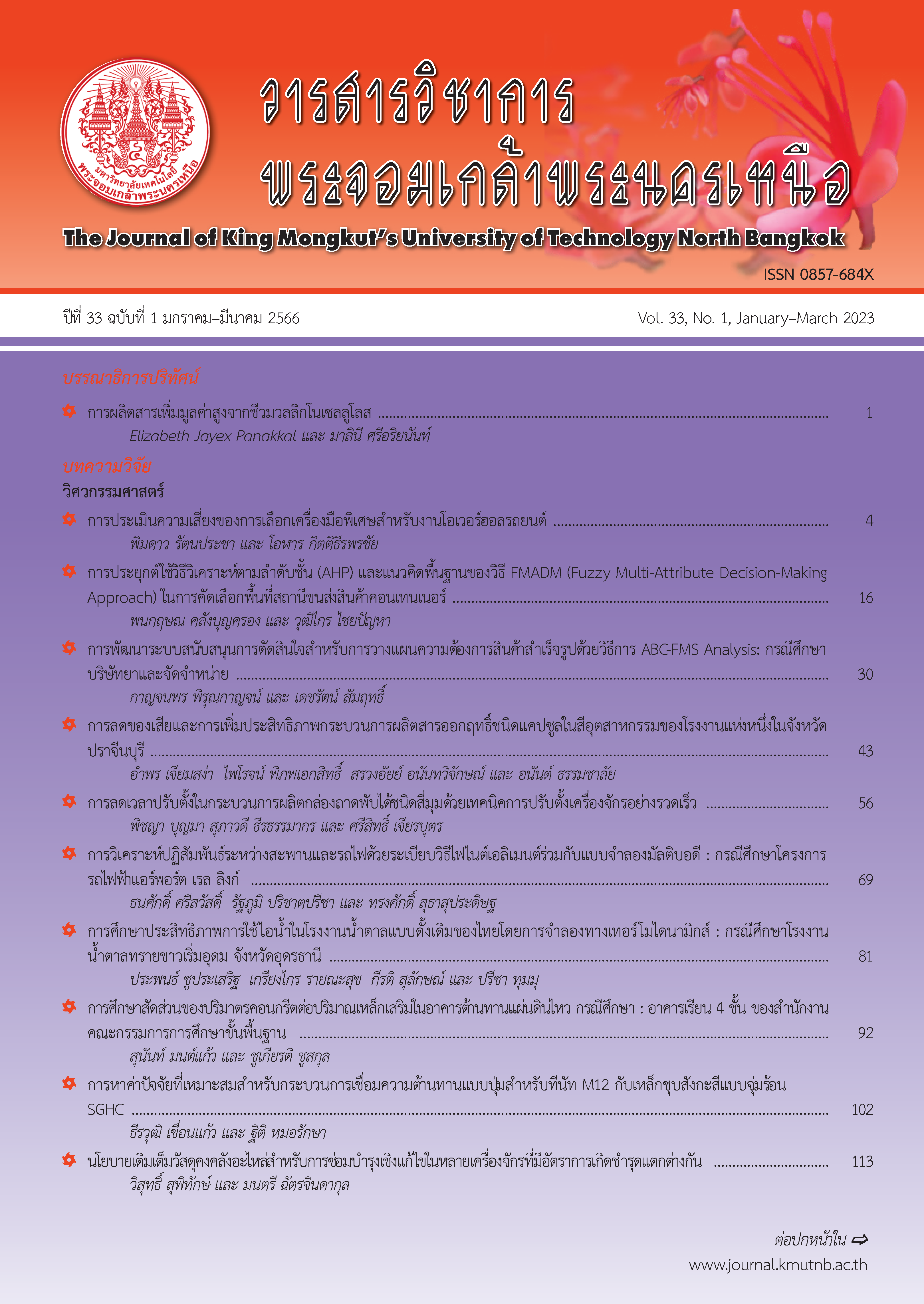การประเมินความสัมพันธ์ระหว่างการปรับเปลี่ยนการใช้งานพื้นที่และพฤติกรรมการใช้งานอาคารพักอาศัยพื้นถิ่นล้านนา ผ่านการวิเคราะห์รูปแบบโครงข่ายการเชื่อมต่อและจัดวางหน่วยพื้นที่
Main Article Content
บทคัดย่อ
บทความนี้มีวัตถุประสงค์เพื่อ 1) ศึกษาพัฒนาการในการปรับเปลี่ยนพื้นที่ใช้สอยอาคารพักอาศัยพื้นถิ่นล้านนา 2) สังเคราะห์ความสัมพันธ์ระหว่างการปรับเปลี่ยนพื้นที่ใช้สอยและพฤติกรรมการใช้งานอาคารพักอาศัยพื้นถิ่นล้านนา วิธีการศึกษาวิจัยเชิงสำรวจ เก็บรวบรวมข้อมูลกายภาพก่อนและหลังการปรับเปลี่ยน สังเคราะห์ข้อมูลตามแนวคิดสัณฐานวิทยา โดยเทคนิควิเคราะห์รูปแบบโครงข่ายการเชื่อมต่อและจัดวางหน่วยพื้นที่ สังเคราะห์พฤติกรรมการใช้งานพื้นที่ภายในอาคารเดิม ว่ามีผลต่อการปรับเปลี่ยนอาคารพักอาศัยพื้นถิ่นล้านนาอย่างไร ผลวิจัยพบว่าก่อนการปรับเปลี่ยนค่าเฉลี่ยการเข้าถึงพื้นที่เท่ากับ 3.068 ค่าความสัมพันธ์พื้นที่เท่ากับ 0.600 และค่าความเชื่อมโยงความสัมพันธ์พื้นที่เท่ากับ 0.554 ภายหลังการปรับเปลี่ยนค่าเฉลี่ยการเข้าถึงพื้นที่เท่ากับ 3.116 ค่าความสัมพันธ์พื้นที่เท่ากับ 0.404 และค่าความเชื่อมโยงความสัมพันธ์พื้นที่เท่ากับ 0.739 แสดงให้เห็นว่า พื้นที่ภายหลังการปรับเปลี่ยนมีแนวโน้มการเปลี่ยนแปลงลักษณะสัณฐานพื้นที่จากรูปแบบเส้น สู่รูปแบบผสม ระหว่างแบบเส้นและแบบพุ่ม โดยพื้นที่ที่เกิดการปรับเปลี่ยนสัณฐานมากที่สุด คือ”เติ๋น” ซึ่งเป็นพื้นที่ส่วนกลางที่แสดงถึงอัตลักษณ์ของสถาปัตยกรรมล้านนา และพบว่ามี 4 ปัจจัยหลักที่ส่งผลต่อการปรับเปลี่ยนอาคารประกอบด้วย 1) การเพิ่มขึ้นของผู้ใช้งานอาคาร 2) การประกอบอาชีพของผู้ใช้งานอาคารเปลี่ยนไป 3) สังคมและเศรษฐกิจ และ4) การเสื่อมสภาพของวัสดุอาคาร เพื่อเป็นฐานข้อมูลสำหรับ การออกแบบ ปรับปรุง อาคารพักอาศัย แบบล้านนาประยุกต์เพื่อรองรับการพัฒนาเมืองเชียงใหม่ ด้านการอนุรักษ์และการท่องเที่ยวของเมืองในอนาคต
Article Details

อนุญาตภายใต้เงื่อนไข Creative Commons Attribution-NonCommercial-NoDerivatives 4.0 International License.
บทความที่ลงตีพิมพ์เป็นข้อคิดเห็นของผู้เขียนเท่านั้น
ผู้เขียนจะต้องเป็นผู้รับผิดชอบต่อผลทางกฎหมายใดๆ ที่อาจเกิดขึ้นจากบทความนั้น
เอกสารอ้างอิง
Chiang Mai World Heritage Working Group, “The action plan project of conservation and development in historical and cultural areas of Chiang Mai according to the guideline of world heritage,” Chiang Mai Provincial Administrative Organization, Chiang Mai, Thailand, Phase 1, No.2/2017, Feb. 2017 (in Thai).
Chiang Mai Municipality, “Chiang Mai ordinance,” Chiang Mai Municipality, Chiang Mai, Thailand, 2014 (in Thai).
Chiangmai City Planners Network, Chiang Mai City Planning Operation. Chiang Mai: Thai Health Promotion Foundation, 2010 (in Thai).
T. Pranom, “A study for conservation planning of the area within Chiang-Mai city wall,” M.S. thesis, Department of Urban and Regional Planning, Graduate School, Chulalongkorn University, 1987 (in Thai).
U. Shummadtayar and N. Ongsavangchai, “Urbanization and urban context variants of old districts,” Journal of Environtmental Design, vol. 5, no. 1, pp. 61–81, 2018 (in Thai).
J. H. Bill Hillier, The Social Logic of Space, Cambridge; Cambridge University Press, 1984.
P. Khaisri, “Spatial organization in the houses of Artisan villages in Kengtung,” Academic Journal of Architecture (AJA), vol. 30, pp. 83–103, 2005 (in Thai).
P. Ounchanum, “Spatial organization in house of Artisan villages in Kengtung,” NAJUA: Architecture Design and Built Environment, vol. 30, pp. A83 - A103, 2016 (in Thai).
R. Lalintip, “Effective space for sustainable: Case study of relative between space and social practice of the old Lamphun city,” Built Environment Inquiry Journal Faculty of Architecture Khon Kaen University, vol. 11, no. 1, pp. 14–32, 2012 (in Thai ).
J. Lorchai, O. Panin, and K. Kerdsiri, “Spatial characteristics in vernacular architecture: Approaches to the design of contemporary architecture,” Journal of Environtment Design, no. 2, vol. 2, pp. 74–77, 2015 ( in Thai ).
S . S a n t , Chiang Mai-Mai: Modern Architecture of Chiang Mai between the Years 1884–1975. Chiang Mai: The Boundary and Its Transformation into the Modern Era, Chiang Mai. Chiang Mai University Press, 2016, pp. 19–37 (in Thai).
L. Vitul, The Development of Architecture in Chiang Mai. Chaing Mai: Faculty of Architecture Chiang Mai University, April 2000, pp. 31–46 (in Thai).
S. Titaya, “Self-extensional space in relocated housing after 2004 Indian Ocean tsunami: Case study of Namkem Community, PhangNga, Thailand,” Journal of Disaster Research, vol. 13, no. 1, pp. 168–176, 2018.

